Ultrasonic cleaning for vinyl records has grown immensely in popularity over recent years. The practice is a mainstay of the jewelry industry, favored for its ability to clean intricate, small crevices at a microscopic level.
Ultrasonic works by using high-frequency pressure sound waves to agitate a liquid, producing tiny cavitation bubbles. Lots of tiny bubbles produce forces that help to gently lift dirt, dust, and grime from the item’s surface.
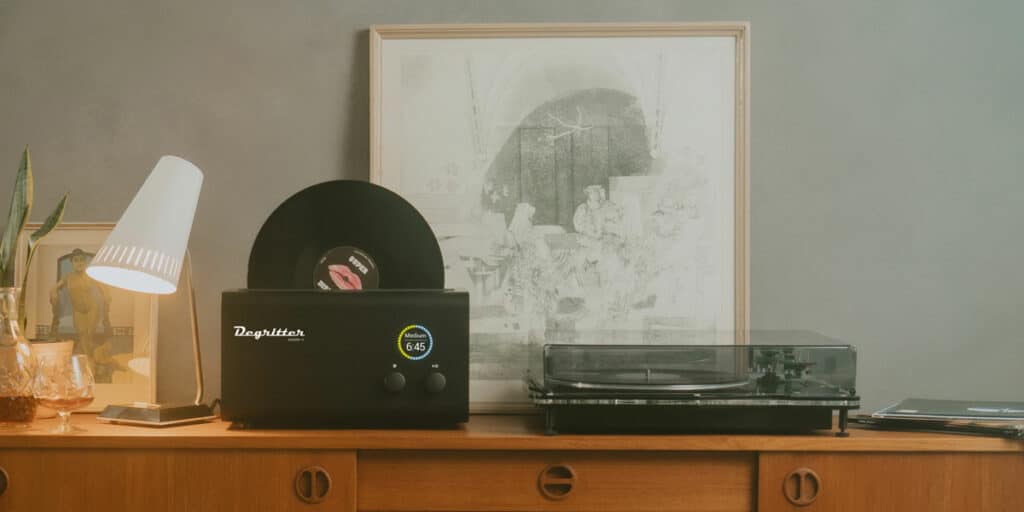
Given the microscopic nature of vinyl record grooves, it’s easy to see why the process has become one of the most popular ways to clean vinyl records.
Choosing the best ultrasonic record cleaner can be overwhelming. From all-in-one machines to piecemeal adapters and tanks, all have their pros and cons.
To help you on the road to ultrasonic success, we’re compiled our pick of the best ultrasonic record cleaning machines to help bring your collection back to life.
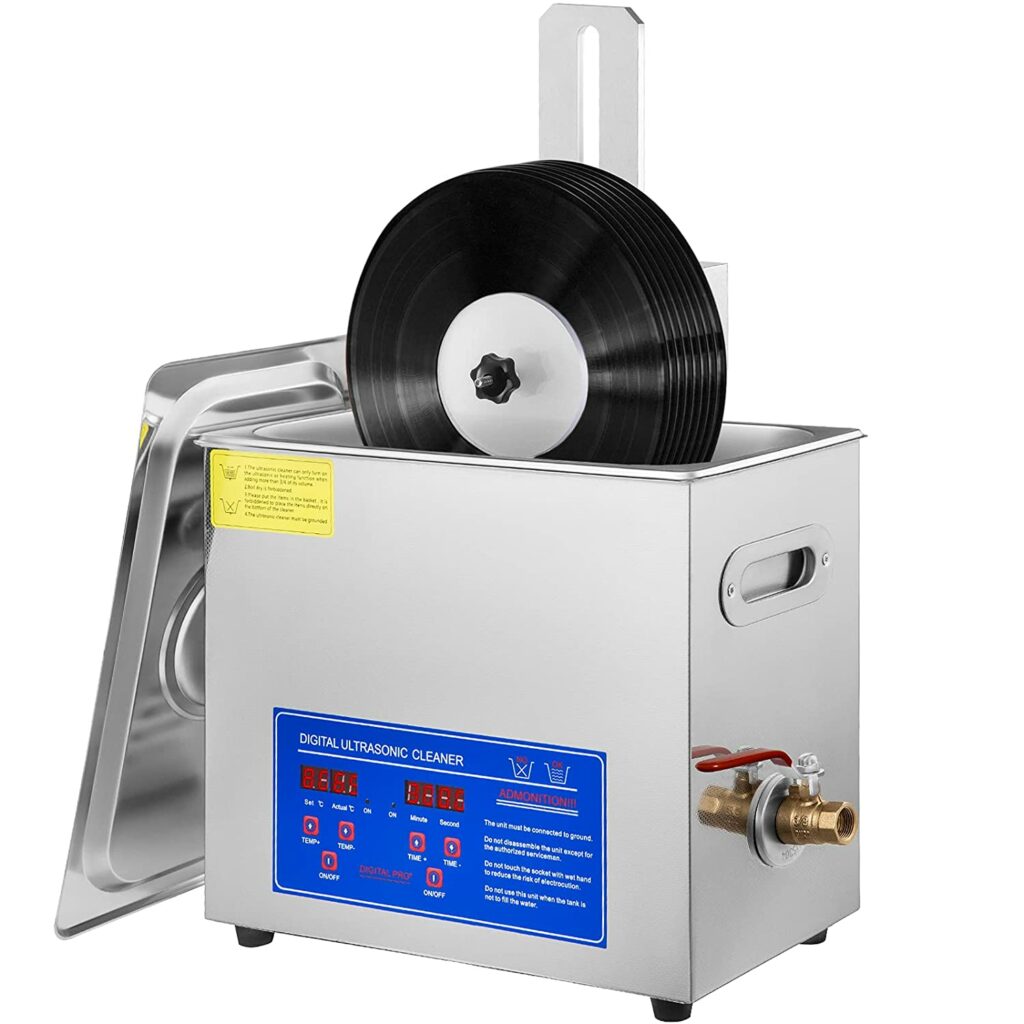
Happybuy Ultrasonic Cleaner
Traditionally, the biggest hurdle to ultrasonic cleaning for vinyl records is price. Purpose-built machines are often prohibitively expensive, leading many innovative companies to produce adaptors that fit a standard 6l ultrasonic cleaning tank.
As more companies design their own versions of these adaptors, this entry point to ultrasonic record cleaning has become a highly competitive market.
You can now pick up all-in-one bundles from Chinese manufacturers that ship with the tank, adaptors, and motor.
At a little over $200, you get what you pay for to a degree. Sure, more expensive versions of the same concept are often better-designed and easier to use, but at this price, it provides a highly accessible option for record collectors willing to put in a little extra work.
Just be sure not to overdo the running temperature. As a generic ultrasonic tank, it’s designed to suit a variety of cleaning procedures. Up to 25 degrees ℃ is generally considered safe, but the machine can climb to 80℃! Keep it mild unless you want to damage your precious vinyl quickly.
Time-wise, keep this to a limit as you can overdo any record cleaning process. Between 5 and 15 minutes, max should be more than enough.
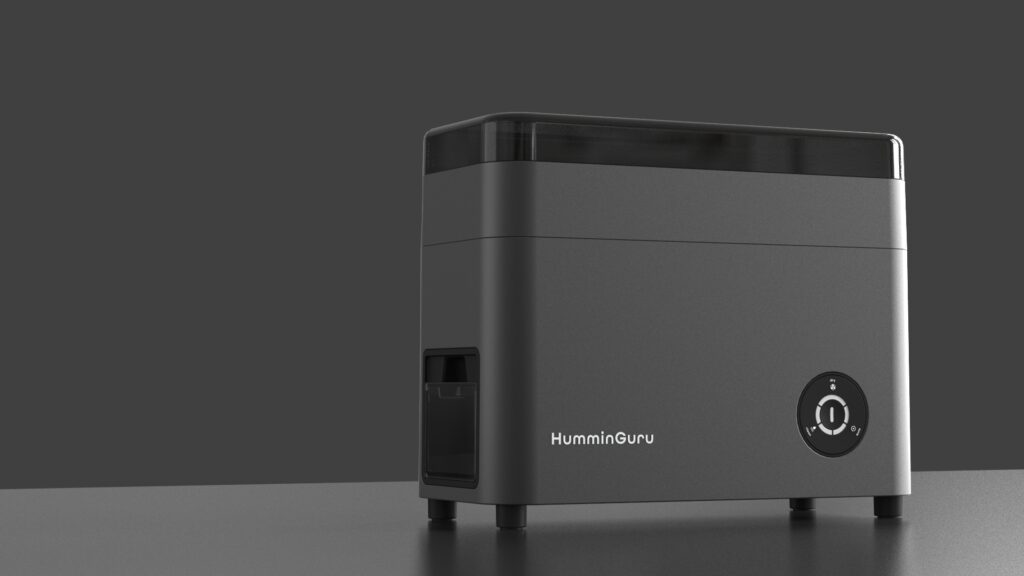
HumminGuru All-In-One Ultrasonic Record Cleaner
The HumminGuru began as a Kickstarter campaign, promising to design and bring to market an affordable ultrasonic record cleaning machine capable of cleaning and drying the record in one compact unit.
The HumminGuru is the most affordable all-in-one machine currently available at $377 (or $427 with adaptors). This might still sound like a lot of money, but considering the cost of its competitors, the HumminGuru is a seriously compelling offer.
For the best results (and this goes for any ultrasonic record cleaning machine), you’ll need to add a little surfactant to break the water surface tension. I use GrooveWasher’s G-Sonic Ultrasonic Concentrate.
Without surfactant, the water struggles to penetrate the groove. Check out our full video and HummingGuru review for a demonstration of how surfactant significantly improves the cleaning process.
VIEW PRODUCT
Sound Matters subscribers can try GrooveWasher products for 10% less using the discount code SOUNDMATTERS10 when shopping directly at groovewasher.com
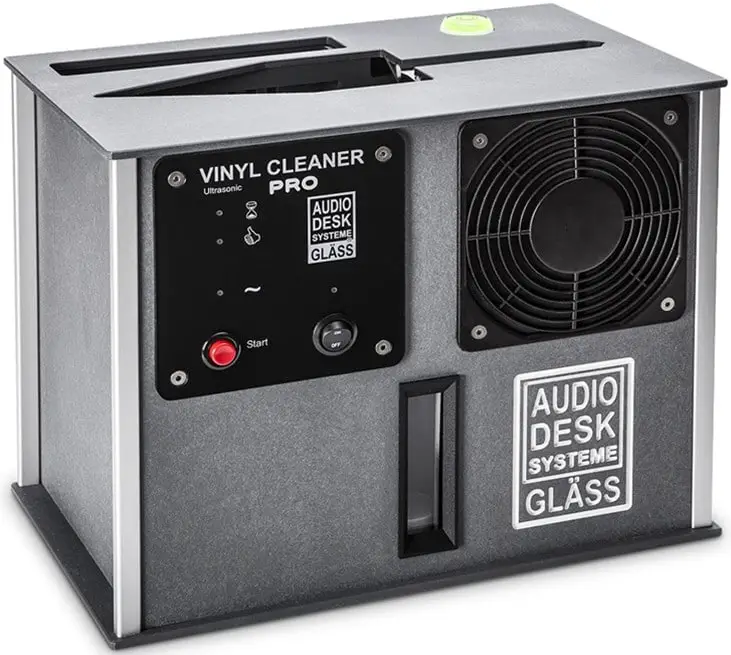
Audio Desk Systeme Vinyl Cleaner Pro
When you investigate the price of most all-in-one ultrasonic record cleaners, you’ll quickly see why the HumminGuru piqued the interest of record collectors worldwide.
Coming in at an eye-watering $4000 (or £2500), it’s easy to see where the demand for HumminGuru originated.
That said, the Audio Desk option is undoubtedly on another level. Their Vinyl Cleaner Pro system is unique in combining ultrasonic cleaning with the addition of conventional mechanical cleaning via rotating microfiber cleaning drums.
It’s a best-of-both-worlds solution where the ultrasonic process reaches deep in the groove, and the mechanical element makes light work of grease and fingerprints that some ultrasonic machines can struggle to remove entirely.
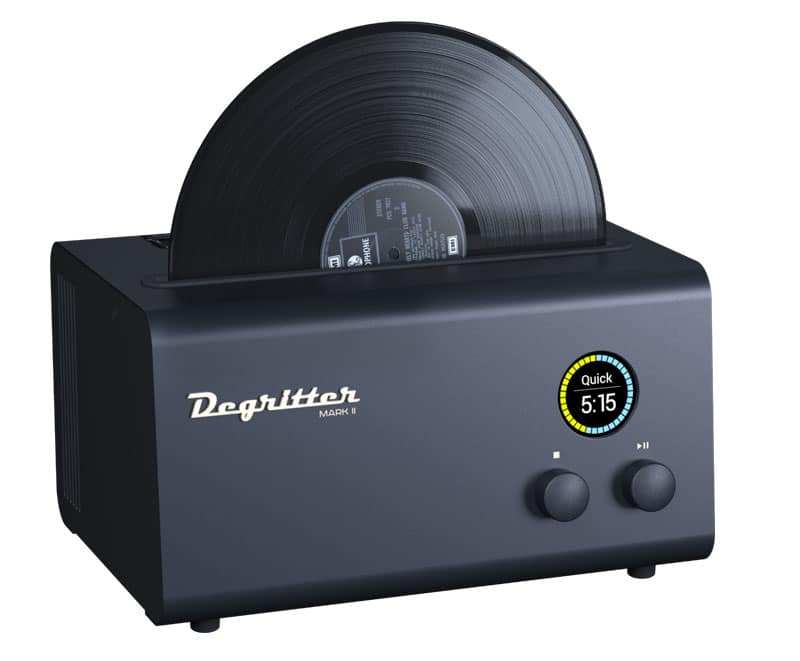
Degritter MARK II Ultrasonic
The original Degritter is a highly acclaimed all-in-one machine relied on by countless record collectors. Undoubtedly, it’s taken the market by storm and is now considered the creme de la creme of ultrasonic record cleaning machines—if you can stomach the up-front cost.
According to Degritter, the 120Khz frequency of their design “provides a finer and more evenly distributed cleaning action than lower-frequency systems.”
Though there is some debate as to which frequency is best, a higher frequency will produce smaller cavitation bubbles and, in theory, have an easier time deep cleaning record grooves.
The power behind the Degritter is also impressive; it features a 300W ultrasonic amplifier, and the cleaning bath has four ultrasonic transducers, two on both sides, for full record coverage. This is considerably more powerful than the more affordable Humminguru, but then again, the price difference is also significant.
Now upgraded as the recently released MARKII model, the latest incarnation of the Degritter features a new stronger, but safe for the record, power-drive while the new Pulse Mode cleaning is said to deliver a better cleaning effect with low power consumption.
For a full overview and performance example of the Degritter, check out my review.
VIEW PRODUCT
The Bottom Line: Ultrasonic Record Cleaners
Ultrasonic record cleaning is unquestionably an invaluable tool in the arsenal of any serious record collector. That said, you get what you pay for to a degree.
In my personal experience, adding a surfactant is a must to help aid the process and get the best from your ultrasonic process. In addition, very dirty records will usually benefit from a pre-clean before going down the ultrasonic route, either by hand or using a vacuum-based record cleaning machine if you own one.
My current process for used records is as follows:
Step 1): Remove all loose dust from the surface using a carbon fiber record brush
Step 2): Pre-clean using a Pro-Ject VC-E vacuum record cleaning machine and GrooveWasher G2 or G3 (depending on how dirty the record is to start).
Step 3): Run the record through my Degritter on a medium or heavy setting, depending on the record condition. (The HumminGuru is a great affordable alternative, which I also own and can recommend – though you might need to work a little harder to get the same results). I add a small drop of GrooveWasher G-Sonic to the distilled water.
For new records, I run them through the Degritter on Quick mode to help remove any manufacturing contaminates.
With any record cleaning process, the aim should be to use as gentle a process as possible to clean your record. When combined with proper record care, deep cleaning your records should become a rare occurrence or a process reserved for used record purchases.
All record cleaning process have their pros and cons as do different types of record cleaning machines. Check our previous features linked to learn more.

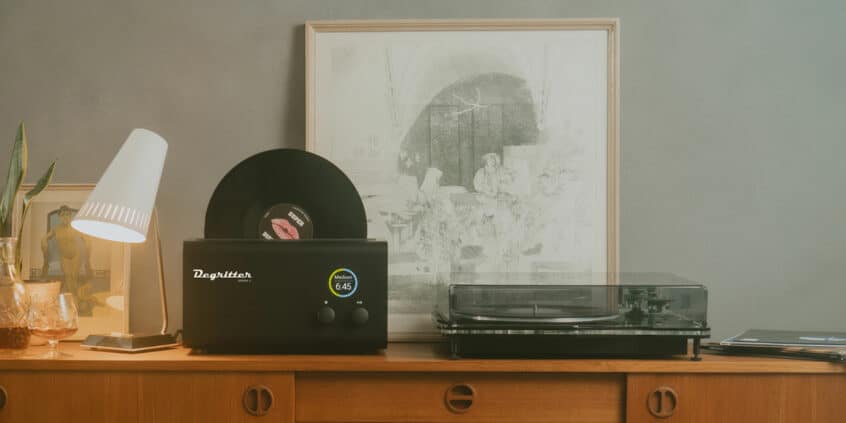


The Audio Desk is a POS. It’s not true ultrasonic, just a bubbler. Plus the $15 pump stops working and you have to tear the whole machine apart just to get to it. And it’s all glued together no screws. See the Audiogon thread for all of the problems with this over priced piece of junk.(POJ)
I use a comparable method also with a Pro-Ject, using the Nitty Gritty First product for pre clean. Then US with a Degritter. Currently playing with different surfactants including A.I.’s US solution in the tank, Tergikleen pre-applied and L’Art du Son solution also pre-applied with small spray bottle and goat hair brush. I think the Degritter solution is among the worst. Leaves an audible haze over the sound and makes my heart do weird things (I have AFIB so probably doesn’t bother most). Working on the final solution, not to be confused with Nazi Germany…
Others have done a before and after playback on you tube with a few records to hear if there was any improvement. Heavy rock and roll can mask surface noise so stick to playing ballards